Jeff Bezos: 8 business lessons from his letters to shareholders
According to recent industry figures, Amazon is the leading eCommerce retailer in the United States with 38,7% share of retail eCommerce sales (source).
Here are the latest Amazon statistics:
- $280.5 billion in net sales
- $11.59 billion in net income
- The most popular product categories: Electronics
- Number of paying Amazon Prime members worldwide: 150 million
- Share of US Amazon customers who are Amazon Prime members: 65%
- Unique monthly US visitors to Amazon sites: 208 million
- Share of direct traffic to Amazon.com: 56.47%
- US Amazon Prime Day conversion rate: 13.5%
- Average annual spending of Amazon Prime members: $1,400
- The most important reason for US shoppers to shop on Amazon: fast, free shipping
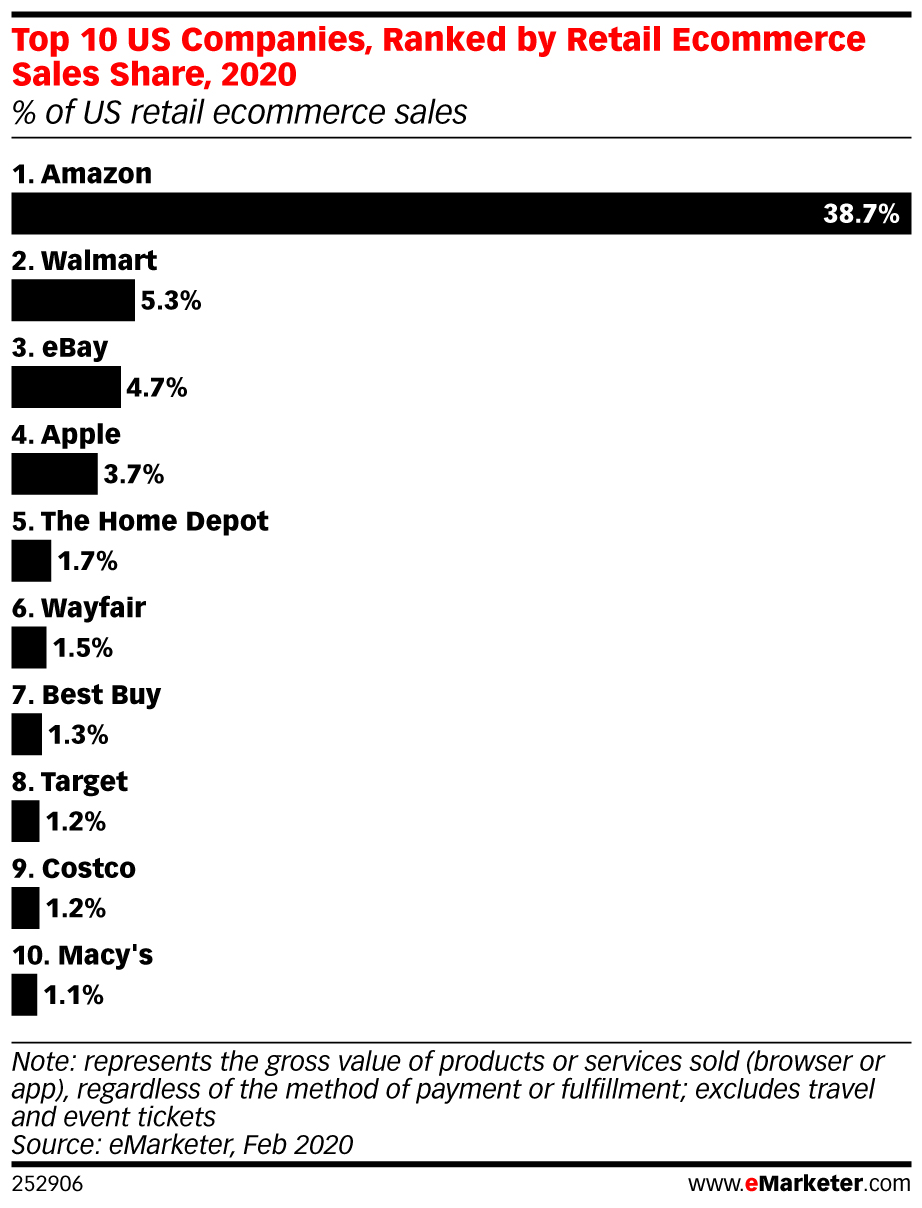
Amazon is #1 in the U.S. Let’s zoom out and take a global approach.
Is the giant retailer maintaining its top place when compared to other eCommerce retailers?
As you can see below, the answer is yes.
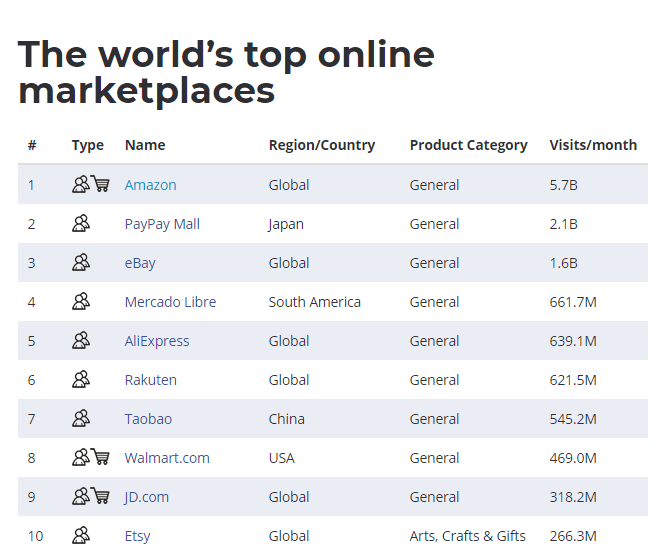
image source: webretailer.com
Amazon.com receives twice the monthly number of visitors as #2, the Japanese retailer PayPay Mall.
If the eCommerce retail industry were a marathon, Amazon would be the front runner, leading the other runners and winning by a landslide.
What makes Amazon so successful and powerful?
What drives this marathon runner to push harder year after year?
How is Jeff Bezos coaching the Amazon collective?
For the purpose of this article, I have analysed Jeff Bezos’ annual letters to shareholders from 2016, 2017, 2018 and 2019. As any Jeff Bezos fan knows, each of his letters ends with a copy of his famous 1997 letter so I have included it in my analysis.
Jeff Bezos: 8 business lessons from his annual letters to shareholders
1. Move quickly to solidify and extend your current position
At the end of 1997, in just three years since starting the company, Amazon.com’ revenue had increased by 838%, selling to more than 1.5 million customers while extending its market leadership in an increasingly aggressive competitive environment (source).
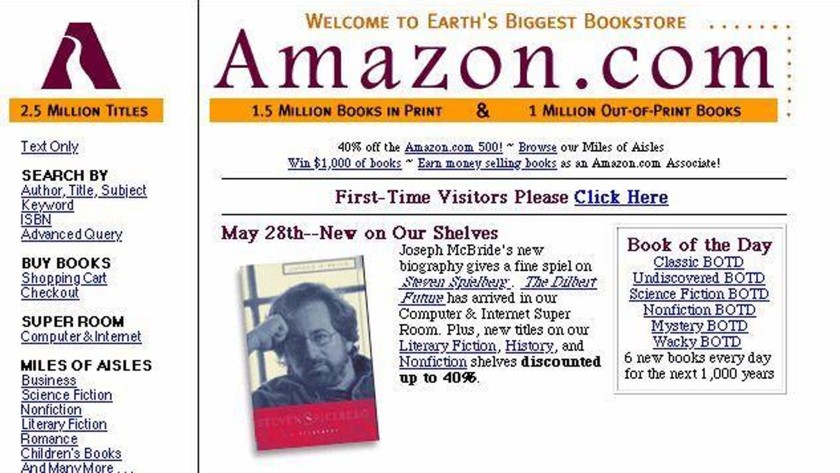
image source: latimes.com
1997 is the year Amazon filed to go public and was preparing to compete with big tech companies AOL and Microsoft which had announced their intention to derive a substantial portion of their revenues from online commerce.
I remind you that Amazon was still selling books at that time.
But that didn’t discourage Bezos who had a strong belief in the online opportunity as expressed in his 1997 letter:
We have a window of opportunity as larger players marshal the resources to pursue the online opportunity and as customers, new to purchasing online, are receptive to forming new relationships. The competitive landscape has continued to evolve at a fast pace. Many large players have moved online with credible offerings and have devoted substantial energy and resources to building awareness, traffic, and sales. Our goal is to move quickly to solidify and extend our current position while we begin to pursue the online commerce opportunities in other areas. We see substantial opportunity in the large markets we are targeting.
2. Set out to delight your customers
After reading Jeff’s letters, if I were to choose only one factor responsible for Amazon’s success it would be his focus on customers.
Complaining customers are a company’s most valuable resource for growth. They reveal blind spots that employees or managers could not otherwise identify giving the business the opportunity to improve and develop.
In his 2016 letter, Jeff says “customers are always beautifully, wonderfully dissatisfied, even when they report being happy and business is great.” In his 2018 letter, he defines them as “divinely discontent”.

image source: blog.aboutamazon.com
Achieving the goal of delighting customers means developing a powerful system built on true customer obsession.
So here’s the Amazon customer-focused trifecta:
- Listen to your customers and use this data to offer them something they simply could not get any other way
- Improving the shopping experience never ends so pursue it with tenacity and persistence
- Invent on behalf of your customers. Your customers will always want something better and it’s up to you to figure out what exactly it is they expect because, and here’s your challenge, they don’t know what to ask for.
We must invent on their behalf. We have to tap into our own inner imagination about what’s possible.
Jeff Bezos
That’s how AWS, one of Amazon’s most successful services came to be. No customer specifically asked for it and yet that’s what they needed. In 2019, AWS generated $10.2 billion in net sales, up 33% from last year.
Remarkable customer experience starts with heart, intuition, curiosity, play, guts, taste. You won’t find any of it in a survey.
Jeff Bezos
3. Make bold investment decisions
In his 1997 letter, Jeff talks about investments and the criteria underlining his investment decisions.
At the heart of Amazon’s investments is the customer. Every investment that Amazon makes is to further improve customer satisfaction and experience by developing systems, infrastructure and service.
Is the investment going to help the company come closer to its goal of achieving market leadership? Is the investment going to support the company achieve its long-term business objectives? If the answer is yes, then the investment gets the green light.
Always measure the effectiveness of your investments. Establish a set of KPIs to measure the results of your investments, discard the ones that don’t perform as expected and double down on the investments that work. Learn from both your failures and your successes.
If you see a sufficient probability of gaining market leadership advantages, go for it and be bold. There’s no need to start small, go bold!
4. Become aware of proxies
What is a proxy? Proxy is something or someone who acts as a substitute. In his 2016 letter, Jeff talks about the danger of allowing proxies to gain power within the company.
Have you ever heard someone say when referring to a bad outcome Well, we followed the process? That is when the process has become more important than the result and replaced it. It’s the process as a substitute for the outcome.
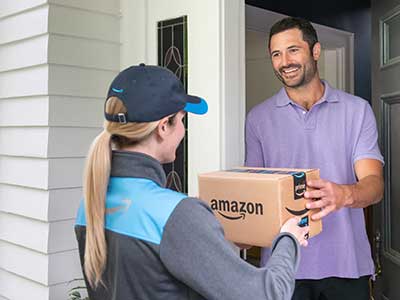
image source: amazon.com
This is a dangerous place for a company and could contribute to its downfall. Jeff’s advice is to become aware of any proxies influencing your business outcomes and eliminate them. Don’t allow market research and customer surveys to become proxies for your customers.
Good inventors and designers deeply understand their customer. They spend tremendous energy developing that intuition. They study and understand many anecdotes rather than only the averages you’ll find on surveys. They live with the design.
Jeff Bezos
5. Your employees must think like an owner
Jeff acknowledged early on that hiring the right people was paramount if Amazon was to be successful and achieve its objectives. “Setting the bar high in our approach to hiring has been, and will continue to be, the single most important element of Amazon.com’s success.”
Amazonians are committed to the company’s core values and goals. They are passionate about working to build something important, something that matters to their customers, something that they can all tell their grandchildren about. Jeff and his hiring team focus on attracting and retaining versatile and talented employees.
“When I interview people I tell them, You can work long, hard, or smart, but at Amazon.com you can’t choose two out of three”, Jeff said in his 1997 letter.

image source: amazon.com
How is Amazon motivating its valuable employees?
The company provides them with two options to choose from: receive compensation in Amazon stock or cash. The retailer would rather compensate its employees in Amazon stock than cash because becoming stockholders changes their mindset. Jeff expects employees to think and act like an owner. To achieve this, employees must actually be owners.
How do you support your employees to take ownership of their work? Do you believe employees thinking and acting like owners makes a difference in the quality of their work?
6. Embrace external trends
Today the business environment is shaped by a wide variety of external factors ranging from technology, online and digital to cultural shifts, changes in customer behaviour etc. Businesses that have adapted to these trends and transformed, as a result, survived. Businesses that have resisted change, didn’t.
Jeff talks about external trends and why businesses should embrace them in his 2016 letter. His advice to every company founder is to acknowledge powerful external trends and embrace them quickly.
Depending on the size of your organization, achieving this could be easy or difficult. It’s somewhat easier for a startup to embrace trends than for a large organization. That’s why it’s imperative for large companies to become agile.
When talking about external trends, Jeff is referring to machine learning and AI.
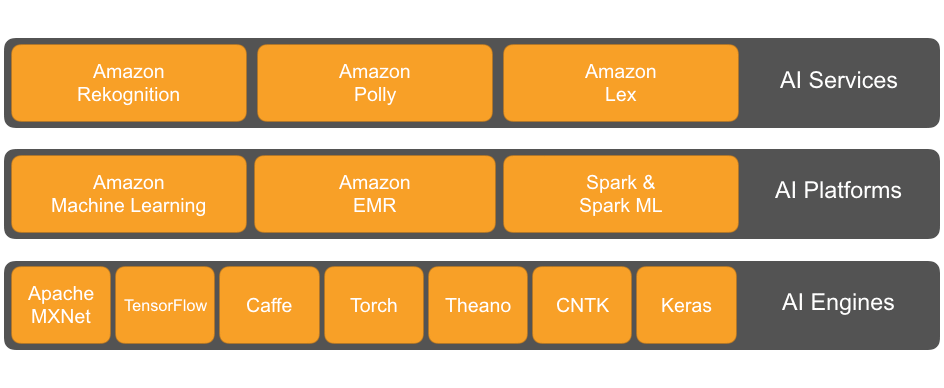
image source: aws.amazon.com
Amazon.com has been working on developing its own machine learning-powered recommendation algorithm since the late 1990s.
In 2003, the development team at Amazon published a paper describing a new recommendation algorithm. The recommendation algorithm they created was called the item-to-item collaborative filter and allowed the online store to radically change for each customer based on their interests.
A 2013 McKinsey article reported that Amazon’s machine learning engine was responsible for 35% of its online sales. I’m sure this number is higher today.
Jeff points out that machine learning drives Amazon’s algorithms for demand forecasting, product search ranking, product and deals recommendations, merchandising placements, fraud detection, translations.
But much of the impact of machine learning is less visible but equally important. Machine learning and AI have a prominent role in the company’s future.
7. Make high-quality decisions fast
Amazon is leading the global eCommerce landscape falling back on 26 years of experience in the industry. It’s one of the big five tech companies, FAAMG—Facebook, Amazon, Apple, Microsoft, and Google and the largest employer among them, with 840,000 employees.
Large organizations have many things going for them (attracting talent, high-value wages, global development, technology advancements etc) with one downside: they are slow at making decisions.
Jeff calls these established large organizations Day 2 companies. Day 1 companies are startups, nimble and agile, bursting with vitality. Day 2 companies are already heading for the end.
Day 2 is stasis. Followed by irrelevance. Followed by excruciating, painful decline. Followed by death. And that is why it is always Day 1.
Jeff Bezos
Twenty-six-year-old Amazon is technically a Day 2 company but with a Day 1 mindset. It’s what allows the giant retailer to keep the energy and dynamism of a lean startup while being #1 in the global eCommerce industry.
How do you make high-quality decisions fast?
Jeff gives the following pointers in this regard:
- Never use a one-size-fits-all decision-making process;
- Make decisions with around 70% of the information you wish you had. If you wait for 90%, in most cases, you’re probably being slow;
- Be good at quickly recognizing and correcting bad decisions. Being wrong may be less costly than you think, whereas being slow is going to be expensive for sure;
- Recognize true misalignment issues early and escalate them immediately;
- Use the phrase “disagree and commit”. If you have a conviction on a particular direction even though there’s no consensus, ask everyone else to gamble with you on it and you’ll probably get a quick yes.
Choose to have the scope and capabilities of a large company and the spirit and heart of a small one.
Jeff Bezos
8. Implement high standards
Staying ahead of the ever-rising customer expectations is one of Amazon’s objectives.
The giant retailer’s obsession with customer satisfaction has led to a number of product innovations (Alexa, AWS) and excellent customer experience (Amazon Go, the no checkout lines physical store, Prime Air, Amazon’s 30-minute delivery service via drones, one-click purchases).
What does it take to achieve such results?
A high-standard mindset.
Here’s what Jeff says about implementing high standards in your company:
- Expose your people to high standards. High standards are teachable and contagious;
- Articulate a few core principles of high standards which helps accelerate the rate of learning;
- Teach high standards in every arena of interest. High standards are domain-specific;
- Recognize the standard and have realistic expectations on scope. To achieve high standards yourself or as part of a team, you need to form and proactively communicate realistic beliefs about how hard something is going to be.
What are the benefits of high standards?
Building better products and services for customers, recruiting and retaining talent and teaching employees how to be professional starting with doing the most invisible work.
People have a voracious appetite for a better way, and yesterday’s ‘wow’ quickly becomes today’s ‘ordinary’.
Jeff Bezos
Join the Conversation
We’d love to hear what you have to say.
Get in touch with us on our LinkedIn Group, Facebook Group or Twitter.
How Shazam reached 1 billion downloads worldwide
This is the story of Shazam and how the company became successful and reached 1 billion downloads worldwide.
It’s a Monday morning in the summer of 2000 and the warm light creeps through the windows of a small eight by six room in a building in the heart of Soho, London.
The room is shared by four people each working fervently on their computers. They are friends and co-founders of Shazam, the company that wants to help people identify songs via their mobile phones.
There’s one major problem. It’s 2000 and mobile phones are not capable of doing that.
In one corner of the room, Chris Barton who came up with the idea behind Shazam is on the phone talking with prospective investors and trying to raise money.
Crouched over a short coffee table with sheets of paper spread all over it, Dhiraj Mukherjee is writing the company’s business plan.
Philip Inghelbrecht is researching the problem sifting through the pages of a thick volume with due diligence. From time to time, he stops and shares his key findings with Avery Wang, who is supposed to create the technology which will allow Shazam to work. Avery looks concerned because four months have passed since he tackled the problem and he still had no idea how to solve it.
Don’t look at the market today but aim for what the market will look like in the future.
Dhiraj Mukherjee
Avery has previously looked to available known techniques for answers like hashing algorithms used in text search engines and speech recognition algorithms. He also did extensive research in content recognition technology. Unfortunately, all his efforts were to no avail. Avery is an optimistic person by nature but now he appears to be distraught.

Shazam Founders: Philip Inghelbrecht, Avery Wang, Chris Barton, Dhiraj Mukherjee / Medium
Although right now things didn’t look very promising at Shazam, his co-founders were resilient and kept pushing forward. And their persistence finally paid off.
Avery, a brilliant inventor is successful in creating the algorithm that Shazam was built upon. He found a statistical indicator of a match by using, what he calls, landmarks and fingerprints within songs.
Firstly, look way ahead of your time, at the risk of launching a company with a slightly wacky idea or incomplete technology stack. Secondly, think big and shoot for the moon; plan for every person to use your product at some point in time. It’s much better to fall short on a lofty goal than to exceed a reasonable projection.
Philip Inghelbrecht
Two years later, Shazam launched in the UK market. What Avery invented was not actually a music recognition technology, but a “recorded sound identification technology”.
Chris knew that there were other companies on the market providing people with a solution to identify the music they heard. These companies have not been very successful because they were thinking too small: they only monitored the music that radio stations played and the user experience was terrible. He had seen an opportunity and took his idea further: how about identifying music played anywhere else not only on the radio?

Avery’s algorithm tackled and solved many challenges:
- Search a massive database of millions of songs;
- Being able to search quickly;
- It had a high recognition rate and a low false-positive rate;
- It was tolerant of noise and distortion, room reverberation, as well as voice compression.
What is Shazam now?
Shazam is a mobile app that recognises music and TV around the user. It is also a platform for artists to connect with their fans.
Things don’t happen like that. The technology usually exists first before any company tries to commercialize it. Shazam invented the technology and earned revenue off of it at the same time.
Here are the challenges that Shazam’s four co-founders have striven to overcome to be successful:
- Waiting for mobile phone technology to catch up with their vision;
- Building technology from scratch and also commercialize on it;
- Raising money;
- Negotiating with mobile operators;
- Building a large enough music database;
- Creating the algorithm i.e. the core recognition service itself;
- Managing 40+ employees and 50 or 60 temporary staff.
I wanted to build a business that was based on cutting-edge technology and had the aim to revolutionize the way we discover music by using the mobile phone.
Chris Burton
How Shazam worked on launch day in 2002:
- 95% of people with mobile phones in the UK could dial 2580 when they heard music in a bar, café, restaurant, club, or on the radio and hold their phone to music;
- 15 seconds later, the voice phone call would terminate and a text message would be sent to their phone with the name of the artist and song;
- There was no charge if Shazam could not identify the song;
- If it could, then they were charged 50 pence on their mobile phone bill.
The team went through difficult times in the years following the launch. The company was not profitable which required them to continue raising venture capital investment. Investors believed in Shazam but they were not jumping to invest because the company had not yet reached user or revenue growth. They had to lay people off.
What got Chris, Avery, Philip and Dhiraj through these rocky years?
They thought rationally, always looking to find a compromise and most importantly remained passionate about their dream. Their friendship was a vital element of their success. Each of them had a high level of integrity and trusted each other.
The most dangerous outcome for a startup during times like these can be a fallout between the founders, but we never had this issue because there was such a powerful bond between the four of us.
Chris Barton
It was not until the advent of the iPhone App Store that Shazam’s user base began to grow exponentially and reach astronomical heights.
Shazam timeline, stats in 2019 and business model
- Chris Barton, Philip Inghelbrecht, Avery Wang and Dhiraj Mukherjee founded the company in 1999;
- By 2000, they managed to raise $1 million from angel investors;
- The service launched in 2002;
- Shazam joined the brand new Apple App Store in 2008 as one of the first apps;
- Introduced a new feature in 2011 – in addition to music, the app was extended to let users Shazam TV programs and ads to get special offers and more information on what they were watching;
- In 2015 Shazam was valued at $1 billion;
- The company was acquired by Apple in 2018 for a reported $400 million;
- To date, the Shazam app has more than 1 billion downloads;
- 150 million people use Shazam every month;
- The app drives the download of 400,000 songs daily;
- The company earns revenue by referring users to make media purchases: the platform provides users with links to purchase music, television programming, and more through content distributors.
My biggest piece of advice is to be careful about the assumption of “If I build it, they will come.”
A mobile entrepreneur should make sure that part of their innovation includes a path to acquiring users and driving usage. Getting these users through an innovative channel that is free will be the key to such a successful business.Chris barton
Join the Conversation
We’d love to hear what you have to say.
Get in touch with us on Facebook Group and Twitter.
Sources: Medium, AppSamurai, ExpandedRamblings, Investopedia
What will the new Facebook news feed changes bring
One of Facebook’s big focus areas for 2018 is making sure the time everybody spends on Facebook is time well spent. “We built Facebook to help people stay connected and bring us closer together with the people that matter to us. That’s why we’ve always put friends and family at the core of the experience. Research shows that strengthening our relationships improves our well-being and happiness. But recently we’ve gotten feedback from our community that public content — posts from businesses, brands and media — is crowding out the personal moments that lead us to connect more with each other,” wrote Facebook’s creator Mark Zuckerberg.
Moreover, according to him, the social media platform’s representatives feel a responsibility to make sure their services aren’t just fun to use, but also good for people’s well-being.
Therefore, the company invested in a deep research that shows that when we use social media to connect with people we care about, it can be good for our well-being. We can feel more connected and less lonely, and that correlates with long term measures of happiness and health. On the other hand, passively reading articles or watching videos — even if they’re entertaining or informative — may not be as good.
Based on the research and the new desires for the brand, some of the main changes will be seen by Facebook’s users in the nearest future. Facebook’s News Feed algorithm will prioritize “meaningful social interactions” over “relevant content”. Moreover, Facebook will de-prioritize videos, photos, and posts shared by businesses and media outlets, which Zuckerberg considered “public content”, in favor of content produced by a user’s friends and family.
“The shift is the most significant overhaul in years to Facebook’s News Feed, the cascading screen of content that people see when they log into the social network. Over the next few weeks, users will begin seeing fewer viral videos and news articles shared by media companies. Instead, Facebook will highlight posts that friends have interacted with — for example, a photo of your dog or a status update that many of them have commented on or liked,” wrote The New York Times.
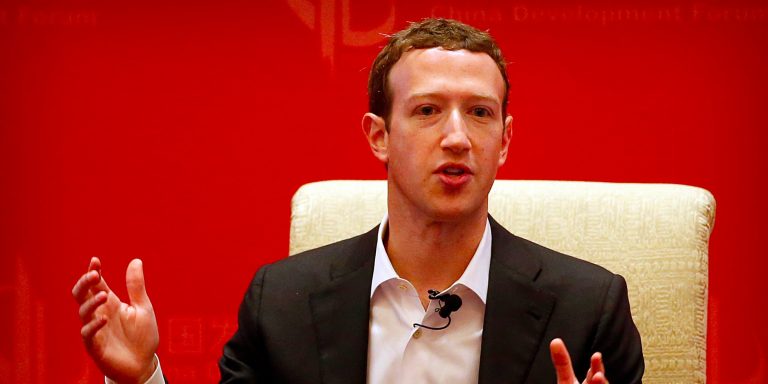
“The changes seemed designed to quiet some of the maelstrom of criticism Facebook has received in the past year, as critics have taken the company to task for cloistering users in filter bubbles, facilitating the proliferation of misinformation, allowing foreign interference in national elections, and exploiting human psychology for profit,” wrote Julia Carrie Wong for The Guardian.
But, the biggest problems that may arise, apart from unimportant, silly posts being “privileged”, the changes in Facebook’s News Feed will affect the most the publishers, nonprofits, small business and many other groups rely on the social network to reach people. Adam Mosseri, vice president of product management at Facebook, who is responsible for running the News Feed, quoted by New York Times, acknowledged that “there will be anxiety” from partners and publishers who often complain about the constant changes in what will be shown across the network.
Moreover, according to ABC, “the latest move represents a major shift, one intended to highlight the posts users are most likely to engage with rather than passively consume. There will be fewer videos, which Facebook considers “passive”. The changes won’t affect ads and will likely hurt businesses that want to reach followers without paying to advertise”.
It’s interesting to see how will the other social networks react to this Facebook change and how much it will actually impact the brands and businesses.










